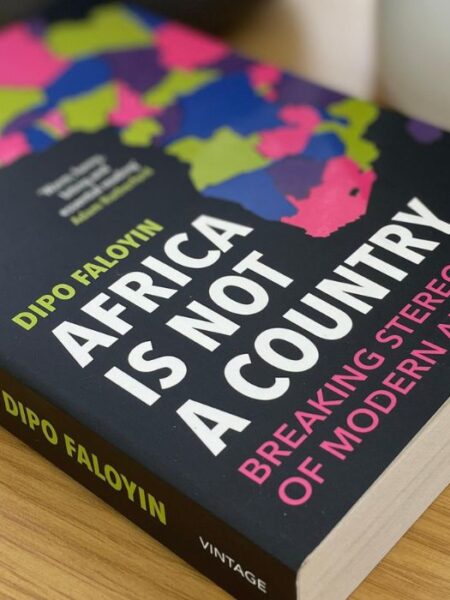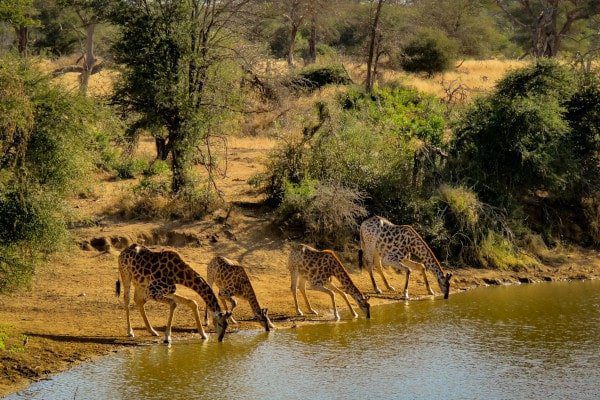Raising Awareness for Global Water Scarcity
Saving our planet, lifting people out of poverty, advancing economic growth… these are one and the same fight. We must connect the dots between climate change, water scarcity, energy shortages, global health, food security, and women’s empowerment. Solutions to one problem must be solutions for all. – Ban Ki-moon
Water is at the very heart of sustainable development. It is essential for socio-economic development, food and energy production, and a healthy planet. Without water, humans and the earth cannot survive. With this in mind, and as a result of the 1992 United Nations Conference on Environment and Development in Rio, world leaders were prompted to create a day devoted to the celebration of water. The United Nations gave it a name and World Water Day made its global debut in 1993.
Today, it is one of the most important days of observance and action. And as more countries around the world find themselves struggling with water shortages, its importance has only become more profound.
What is the purpose of World Water Day?
World Water Day exists to bring attention to the value of water, create awareness around the water crises facing many countries worldwide, and advocate for the sustainable management of the world’s freshwater resources.
Why should we celebrate World Water Day?
In 2010, the United Nations recognized the right of every human being to have access to water that is safe, affordable, and accessible. This was one of the most important milestones in the fight for water and became Sustainable Development Goal (SDG) #6: “Clean Water and Sanitation”.
Yet, over 800 million people around the world do not have access to clean and safe drinking water, half of the world’s population will be living in water-stressed areas by 2025, and by 2030, 700 million people worldwide could be displaced by severe water scarcity.
Statistics like these are staggering and impossible to ignore.
World Water Day aims to address the reasons why so many people are being left behind when access to safe, clean water is a fundamental human right.
Whether it is the result of corporate abuse or a changing climate, the reasons are not always simple or within our control. However, the value of water is undeniable, so it is up to us, in whatever capacity, to conserve this life-giving resource, because, without it, there is no life.
“Water is a necessity for everyone and yet it remains a luxury to many people around the world.” – WaterAid
What is water scarcity?
Water scarcity could either mean scarcity in availability or scarcity in access. Scarcity in availability is due to a lack of water resources to meet demand, while scarcity in access is often due to failure of institutions to ensure a regular supply of water as a result of poor management or inadequate infrastructure.
Water scarcity due to shortages of water currently affects every continent. In the last century, global water use has been growing at more than twice the rate of population growth and many regions are reaching the limit at which water can be sustainably delivered.
In 2015, the World Economic Forum listed water scarcity as the largest global risk in terms of potential impact over the next decade.
Some water scarcity facts:
- About 40% of the world’s population is affected by water scarcity.
- Water scarcity currently affects half of the largest cities in the world.
- 31% of schools around the world don’t have clean water.
- Over 2 billion people live in countries experiencing high water stress.
- A third of the world’s biggest groundwater systems are already in distress.
- Up to 443 million school days are lost each year due to water-related illnesses.
- Women around the world will spend a collective 200 million hours collecting water per day.
- In developing countries, as much as 80% of illnesses are linked to water.
What is the main cause of water scarcity?
Water scarcity can be the result of several things: overwhelming demand as a result of population growth and urbanization, poor management, climate change, limited resources, and unnecessary waste.
“The mismanagement, misuse and the failure to properly value water are others.” – U.N. Department of Public Information
How does climate change affect water scarcity?
We can’t talk about the global water crisis without talking about the changing climate. They are inextricably linked. As temperatures rise around the world, the delicate balance of the earth’s water cycle is disturbed. This causes the desert and rain belts to shift and weather patterns to change.
One of the greatest disruptions is the distribution of water. Warmer temperatures accelerate the rate of evaporation, but because the cycles aren’t working as they should, the water is not evenly distributed or going where it should. This can cause too much water in some parts of the world and too little in others. Some cities will experience severe flooding and unprecedented monsoon rains and cyclones, while other cities will find themselves caught in blistering droughts with water reservoirs running dry.
This can have a severe impact on places that rely on annual rainfall to replenish water resources. Or on the other end of the spectrum, places that do not usually get a lot of rainfall are suddenly engulfed with water that the dry earth can not hold, so it just runs right off and the risk of drought increases.
Which countries suffer from water scarcity?
Wealthy countries such as Australia, China, and Spain are struggling with water woes. Mandatory water restrictions were introduced in drought-stricken California back in 2015, a first for the American west. Even the UK may face water shortages within 25 years, according to the Environment Agency.
Cape Town, a thriving cosmopolitan city and popular tourist destination in South Africa, escaped the clutches of Day Zero not too long ago, and is still struggling with water restrictions. The city received worldwide coverage as the lack of rains had it facing the real possibility of reaching Day Zero.
As more cities around the world are grappling with water shortages, we are suddenly faced with the harsh reality that water scarcity is not something that only happens in dusty developing countries. It is very much a global water crisis.
*Day Zero was set to be the day when city officials would be forced to cut off the normal water supply to 75% of the city’s homes.
What are the effects of water scarcity?
There are numerous effects of water scarcity.
Every industry from energy and manufacturing to food and health care rely on water to function properly. Sustaining agriculture and food production would be impossible and more diseases would spread if hospitals and clinics could not practice proper hygiene. This could cripple entire industries and cities.
However, the developing world is experiencing the worst of these effects.
Water is too expensive in many rural communities and poor countries, so locals end up collecting water from ponds, streams, or other sources. These water sources are often contaminated with chemicals or polluted with sewage and waste as a result of inadequate management of urban, industrial, and agricultural wastewater. This leads to the spread of diseases such as cholera, typhoid, and polio.
Women and young girls can’t go to work or school because they need to collect water for their families, which prevents women from focusing on their families or jobs and prevents girls from going to school.
Clean water means economic growth, education, better income, and healthy neighborhoods. So, a water crisis is not just a water crisis; it is an economic crisis, an education crisis, a health crisis, and a social crisis. However, when you empower people with safe water, you provide them with health and the opportunity to break the cycle of poverty.
Will we ever run out of water?
Theoretically we only have access to about 0.007% of the earth’s water. However, misuse and mismanagement, unnecessary wastage, erratic weather patterns, and water pollution pose real threats.
Runoff from agricultural activities, improper sewage disposal, rapid urban development, dumping of chemical and radioactive waste, and oil spills are some of the main causes of water pollution.
Fortunately, it isn’t all doom and gloom. All around the world people are realizing the importance of conserving water and treating it as a scarce and precious resource.
Countries such as Israel overcame water scarcity by seeking sustainable solutions to their water woes. They currently reuse 85% of their waste water, have eliminated crops like cotton, which require a lot of water, and made improvements in water efficiency to free up water for population growth.
After its dance with drought, Cape Town is currently exploring desalination plants that will treat ocean water and turn it into usable water.
The recent student protests around the world also show that more and more people are becoming aware of their water footprint and want to see the earth protected. So the future of mother earth may not be so grim after all.
“Improved water supply and sanitation, and better management of water resources, can boost countries’ economic growth and can contribute greatly to poverty reduction.” – World Health Organization
How can we prevent water shortage?
It is as simple as being more conscious about your water usage. Take note of how much you use, and try not to use unnecessarily. If the folk down in Cape Town could survive on just 50 liters a day, it can’t be that difficult. If just one city could stave off Day Zero by being more careful with their water usage, imagine what would happen if the whole world made an effort too.
One of our contributions to fighting the water crisis is teaching children and teachers about the importance of washing their hands and brushing their teeth during Washy Washy Week on our Teaching & Community Support Project in Zanzibar, Tanzania.
At African Impact, we believe even a small change can make a big difference.
Here are some small ways you can reduce your water footprint:
- Turn the tap off when you brush your teeth.
- Recycle your water where you can. Shower water can be used to flush the toilet.
- Take shorter showers.
- Try to only use the dishwasher or washing machine when it is full.
- Lower the water pressure on taps and showers heads.
- Join a water project.
Stay up to date and never miss out.
To stay up to date with our latest volunteer project developments, news and promotions. No spam, just high quality content.
"*" indicates required fields
Other recent blog posts

Basic Camera Settings for Wildlife Photography

The IUCN Red List of Threatened Species


